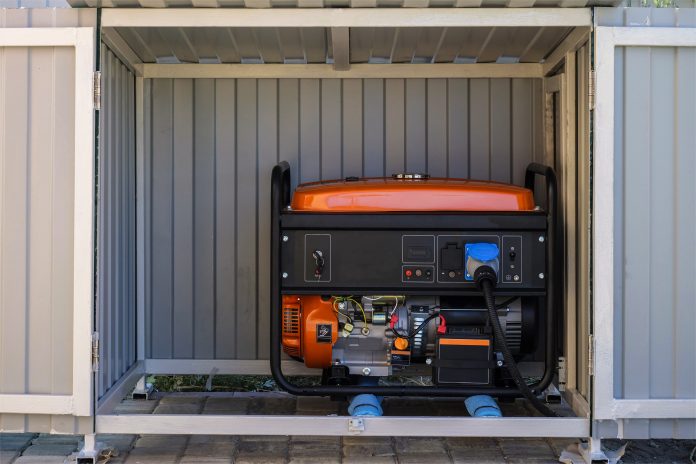The Great Northeast Blackout of 1965 stands on record as one of the biggest blackouts in US history, affecting a whopping 30 million people in eight states. It’s now more than half a century later and blackouts still remain part and parcel of our daily lives. While blackouts are unavoidable in most cases, you don’t have to live through the darkness.
With a standby generator, you can sidestep blackouts and brownouts for good. No more water freezing in the pipes or food spoiling because there’s no electricity to power appliances. Standby or whole-home generators provide a steady stream of electricity in the event of a blackout or brownout.
If you’re new to whole-home generators, it can be a tad challenging to pick the right one from the plethora of options available. If this describes your predicament, worry not; you’re in the right place.
In today’s post, we’ll be showing you how you can pick the right standby generator for your home.
Pick a Fuel Source for Your Standby Generator
The first step in choosing the right standby generator is picking the fuel source for your standby generator. For most homes, natural standby generators will do just fine because most homes already have natural gas. However, it’s also important to consider how much power you need when picking a fuel source.
For instance, standby generators that run on propane or natural gas are usually air-cooled and generate 20 kW or below. However, generators that produce more than 20 kW of power mostly run on diesel.
Difference Between Air-Cooled and Liquid-Cooled Generators
Air-cooled and liquid-cooled generators are very different from each other. Air-cooled generators use a fan that blows air towards the engine to cool it. Liquid-cooled generators, on the other hand, use a radiator cooling system within the generator.
The cooling system in a liquid-cooled generator is like the one you’d find in an automobile. Between the two, air-cooled generators offer the most value.
Write Down Your Home’s Power Needs
Establish your home’s power requirements and rate capacity before settling for a whole-home generator. Some people want their generators to power their entire homes in case of a blackout. Others, on the other hand, want the generator to power only a few vital appliances.
Home standby generators can power all the electrical appliances in your home, but maybe not at the same time. That’s why it’s important to understand your home’s specific power requirements before purchasing a generator. In doing so, you can ensure the generator powers your entire house in the event of a blackout.
To find out how much power you need, write down a list of all the appliances you want the generator to power. Next to each appliance, write down the wattage needed to power the appliance. Add up all the wattages to get your home’s power requirements.
Remember, you can always choose to power only a handful of appliances. However, we’d recommend getting a generator that powers your entire home once and for all.
Pick a Transfer Switch
Transfer switches are what allow your generator to turn on when the power goes out. There are many types of transfer switches that you can choose for your home. These switches work hand-in-hand with standby generators to ensure a steady supply of electricity to your home.
We highly recommend automatic transfer switches because of their convenience. These switches spring into action, the moment they sense a power outage. This saves you the hassle of having to manually turn on the generator.
Picking the right transfer switch for your home is as easy as checking the service panel’s amperage. Head to your home’s circuit breaker and check the top pull-out. If you can find any info on the same, you’d best call a professional electrician to help you out.
Choose a Standby Generator Brand
There’s no shortage of standby generator brands in the country. In fact, a quick search on Google will expose you to tens of generator brands. It’s your job to sift through these brands and find the right one for your needs.
The internet is an incredible resource for learning about the different generator brands. It’s a good idea to pick a popular brand with a solid reputation. Check out reviews online to find out what other people have to say about specific brands.
Also, talk to one or two experts and seek their professional opinion about the best standby generator brand. They will help you make the right choice.
Check the Generator’s Portability
It’s also important to check how portable the generator is before making a purchasing decision. Although you’ll hardly move the generator, it wouldn’t hurt to get a very portable generator. That way, you can take it for your camping tricks and even give it to your friends when you’re out of the country.
Ultra-portable generators run mostly on propane, natural gas, and sometimes diesel. While portability is important, don’t forget that the generator needs to power your entire house. Sacrificing portability for power might not be such a good idea.
The Type of Connection
Standby generators sit outdoors, possibly in a shed or a tiny enclosure. Checking the generator’s connection type is crucial because it determines how easy it will be to connect to your home. Most homeowners opt for transfer switches, which are the most convenient type of connection for these generators.
We’ve already mentioned something about transfer switches and how you need to pick the right one for your home. Apart from automatic transfer switches, you can also get:
- Service disconnect transfer switch
- Load centers transfer switch
- Standard transfer switch
Consult with a reputable residential electrician to determine the best type of connection for your home.
Get Your Standby Generator Today
Standby generators are lifesavers and a must-have for any homeowner looking for a constant electricity supply, regardless of blackouts. This generator buying guide should help put you on the right track to buying the best standby generator for your home.
Don’t forget to check out the other posts for more informative content.










